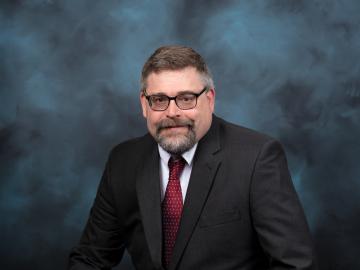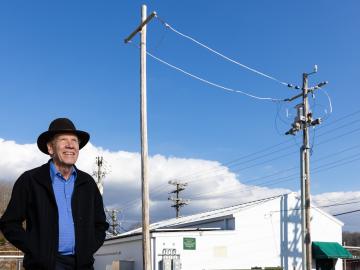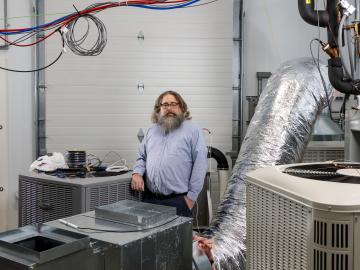
Filter News
Area of Research
- (-) Energy Science (90)
- (-) National Security (21)
- (-) Nuclear Science and Technology (5)
- Advanced Manufacturing (5)
- Biological Systems (2)
- Biology and Environment (65)
- Building Technologies (3)
- Computational Biology (1)
- Computational Engineering (1)
- Computer Science (8)
- Electricity and Smart Grid (1)
- Functional Materials for Energy (1)
- Fusion and Fission (4)
- Fusion Energy (1)
- Materials (52)
- Materials for Computing (6)
- Neutron Science (16)
- Quantum information Science (2)
- Supercomputing (87)
News Topics
- (-) Artificial Intelligence (19)
- (-) Big Data (11)
- (-) Bioenergy (28)
- (-) Buildings (38)
- (-) Composites (17)
- (-) Frontier (2)
- (-) Microscopy (8)
- (-) Molten Salt (5)
- 3-D Printing/Advanced Manufacturing (84)
- Advanced Reactors (16)
- Biology (14)
- Biomedical (9)
- Biotechnology (5)
- Chemical Sciences (14)
- Clean Water (8)
- Computer Science (43)
- Coronavirus (15)
- Critical Materials (9)
- Cybersecurity (25)
- Energy Storage (71)
- Environment (59)
- Exascale Computing (2)
- Fossil Energy (2)
- Fusion (10)
- Grid (43)
- High-Performance Computing (10)
- Hydropower (3)
- Isotopes (6)
- Machine Learning (18)
- Materials (36)
- Materials Science (32)
- Mathematics (2)
- Mercury (3)
- Microelectronics (1)
- Nanotechnology (9)
- National Security (37)
- Neutron Science (19)
- Nuclear Energy (44)
- Partnerships (16)
- Physics (4)
- Polymers (11)
- Quantum Science (3)
- Security (15)
- Simulation (4)
- Space Exploration (7)
- Statistics (1)
- Summit (6)
- Transportation (68)
Media Contacts

It’s a simple premise: To truly improve the health, safety, and security of human beings, you must first understand where those individuals are.

What’s getting Jim Szybist fired up these days? It’s the opportunity to apply his years of alternative fuel combustion and thermodynamics research to the challenge of cleaning up the hard-to-decarbonize, heavy-duty mobility sector — from airplanes to locomotives to ships and massive farm combines.

A team of researchers has developed a novel, machine learning–based technique to explore and identify relationships among medical concepts using electronic health record data across multiple healthcare providers.

Tackling the climate crisis and achieving an equitable clean energy future are among the biggest challenges of our time.

ORNL scientists had a problem mapping the genomes of bacteria to better understand the origins of their physical traits and improve their function for bioenergy production.

Every day, hundreds of thousands of commuters across the country travel from houses, apartments and other residential spaces to commercial buildings — from offices and schools to gyms and grocery stores.

The American Society of Heating, Refrigeration and Air-Conditioning Engineers, or ASHRAE, selected Oak Ridge National Laboratory’s Brian Fricke as one of 25 members elevated to fellow grade during its 2022 winter conference.

ORNL, TVA and TNECD were recognized by the Federal Laboratory Consortium for their impactful partnership that resulted in a record $2.3 billion investment by Ultium Cells, a General Motors and LG Energy Solution joint venture, to build a battery cell manufacturing plant in Spring Hill, Tennessee.

Bruce Warmack has been fascinated by science since his mother finally let him have a chemistry set at the age of nine. He’d been pestering her for one since he was six.

When Brian Fricke walks into a supermarket, evidence of his scientific achievement is all around in the refrigerated cases housing the fresh fruits and vegetables. As an Oak Ridge National Laboratory building equipment researcher, Fricke has a long history of making sure that produce is kept fresh in an energy efficient and environmentally sound manner.


